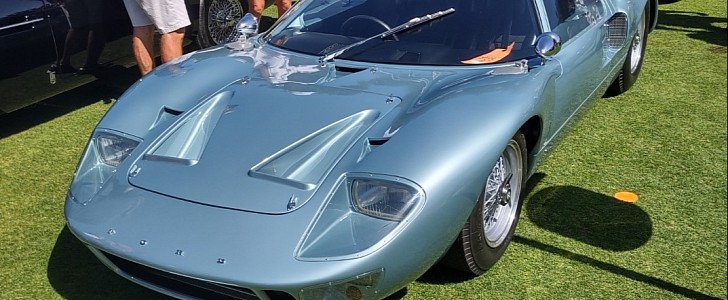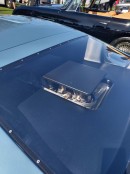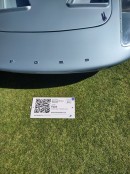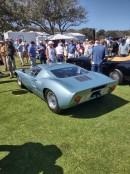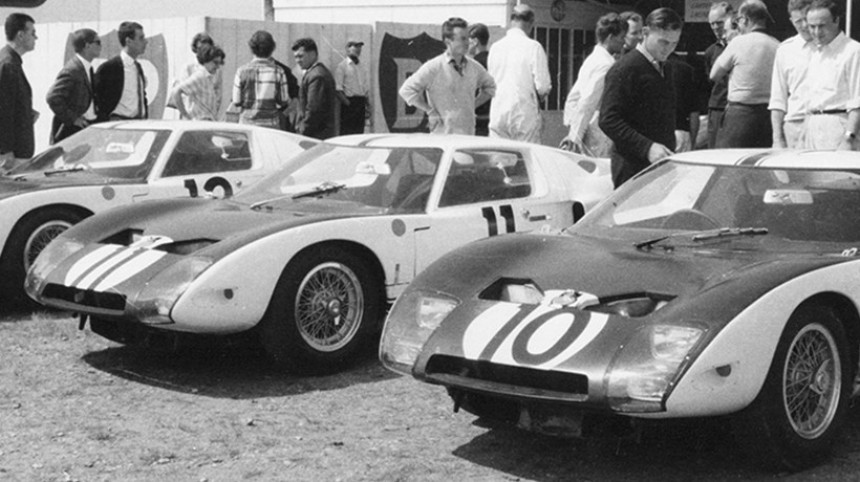Nobody can deny the brute force offered by a big block V8, but the first Ford GT40s delivered composure and confidence from Shelby’s hottest 289 small block with a handfull being offered to the public
We all know what happened when Mr. Ford attempted to buy Ferrari, but the story often overlooks the origins of the GT40. Back in 1962, Lola Cars had an idea for something revolutionary. Instead of building a lightweight body to fit a tube frame chassis, they engineered a one-piece monocoque with subframes at each end. Weight was the major enemy, so they took another leap by using the powertrain as the cornerstone of the rear suspension. Holding it all together was a 4.7 liter Ford small block, something just as unprecedented in GT racing.
Ford had been watching Carroll Shelby’s Cobra evolve from the AC Bristol, and they figured lightning could strike twice. Lola had only completed two prototypes when Ford assumed control in late 1963. With a goal of beating Ferrari at Le Mans in ‘64, an all-star team had 10 months to work out all the issues. Sparing no expense, Bruce McLaren’s high speed testing revealed the car wanted to take flight. Adding spoilers increased grip, but it proved too much for the suspension as the structure failed at Nürburgring. After an early lead at Le Mans, the transmissions proved to be incapable of lasting twice around the clock.
With nothing to show for the ‘64 season, Ford split the program in half. Development of the small block cars would continue at Shelby American while Holman Moody worked on stuffing the monster 7-liter between the rear wheels. Determined to extract every ounce of performance from the 289, Shelby’s engineers made use of archaic computer simulations offered by Ford Aerospace while crafting new body panels from fiberglass instead of aluminum. A pair of 4-barrel carburetors were hidden by an exotic exhaust system dubbed the “Bundle of snakes”.
While the big block cars evolved into the MK2, the goal of the small block MK1 program was homologation. In order to compete in Group 4 racing, the engine had to be under 5 liters and 50 cars had to be sold to customers. Therefore, the compression ratio was dropped from 10:1 to 9:1, and each car was given a full interior of black vinyl. ZF provided a 5-speed gearbox with excellent street manners, and the racing clutch was replaced by a more forgiving triple disc.
All 31 cars were right-hand drive and right-hand shift, and they even had a small AM radio next to the door jamb. Other pleasantries included heat, defrost, and Borrani wire wheels. While Competition cars weighed in at 910 kg (2,006 lbs), the Road examples’ additional parts added 50 kg (or 110 lbs). In reality, buyers could choose any combination of Competition and Road parts for a starting price around $16,000. Capable of reaching 62 mph in 4 seconds, Ford dealers often paired them with trucks and trailers for a complete racing package.
This example from 1966 was the only car painted in Opalescent Sliver Blue, and it served as the Pace Car for the 1967 Can-Am race at Laguna Seca. Driven by Stirling Moss and James Garner, it was displayed by Janus Associates of San Clemente, California. After returning to Ford in 1968 it was fitted with the improved aerodynamics of the MK2 and raced successfully for over a decade until the original engine let go.
After a 3-year restoration by Canepa, it was unveiled at Pebble Beach last year where it won 2nd place. While the big block MK2 cars were banned after dominating Le Mans in ‘67, these small block cars went on to victory lane in ‘68.
Given the rarity and value, seeing an original GT40 was an unexpected surprise, so I hope this helps you make an informed decision if you have a few million dollars at your disposal. Stay with us for all your automotive history.
Ford had been watching Carroll Shelby’s Cobra evolve from the AC Bristol, and they figured lightning could strike twice. Lola had only completed two prototypes when Ford assumed control in late 1963. With a goal of beating Ferrari at Le Mans in ‘64, an all-star team had 10 months to work out all the issues. Sparing no expense, Bruce McLaren’s high speed testing revealed the car wanted to take flight. Adding spoilers increased grip, but it proved too much for the suspension as the structure failed at Nürburgring. After an early lead at Le Mans, the transmissions proved to be incapable of lasting twice around the clock.
While the big block cars evolved into the MK2, the goal of the small block MK1 program was homologation. In order to compete in Group 4 racing, the engine had to be under 5 liters and 50 cars had to be sold to customers. Therefore, the compression ratio was dropped from 10:1 to 9:1, and each car was given a full interior of black vinyl. ZF provided a 5-speed gearbox with excellent street manners, and the racing clutch was replaced by a more forgiving triple disc.
All 31 cars were right-hand drive and right-hand shift, and they even had a small AM radio next to the door jamb. Other pleasantries included heat, defrost, and Borrani wire wheels. While Competition cars weighed in at 910 kg (2,006 lbs), the Road examples’ additional parts added 50 kg (or 110 lbs). In reality, buyers could choose any combination of Competition and Road parts for a starting price around $16,000. Capable of reaching 62 mph in 4 seconds, Ford dealers often paired them with trucks and trailers for a complete racing package.
After a 3-year restoration by Canepa, it was unveiled at Pebble Beach last year where it won 2nd place. While the big block MK2 cars were banned after dominating Le Mans in ‘67, these small block cars went on to victory lane in ‘68.
Given the rarity and value, seeing an original GT40 was an unexpected surprise, so I hope this helps you make an informed decision if you have a few million dollars at your disposal. Stay with us for all your automotive history.
